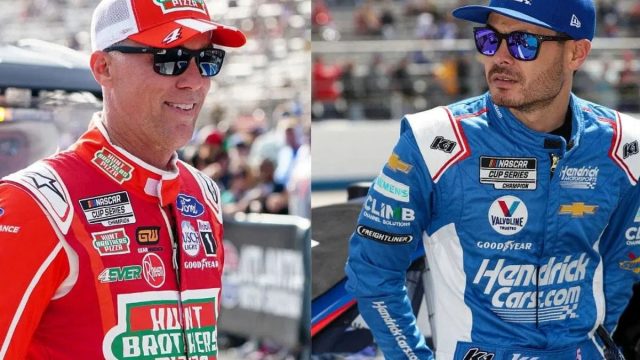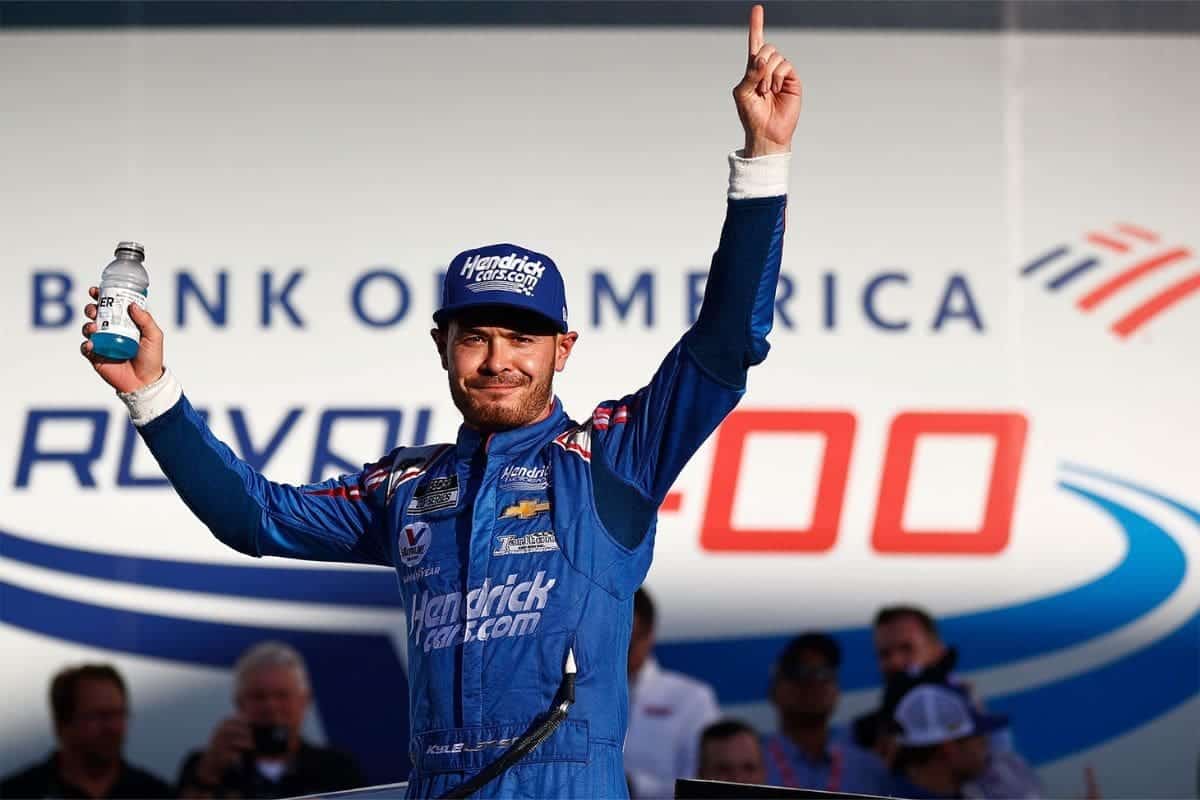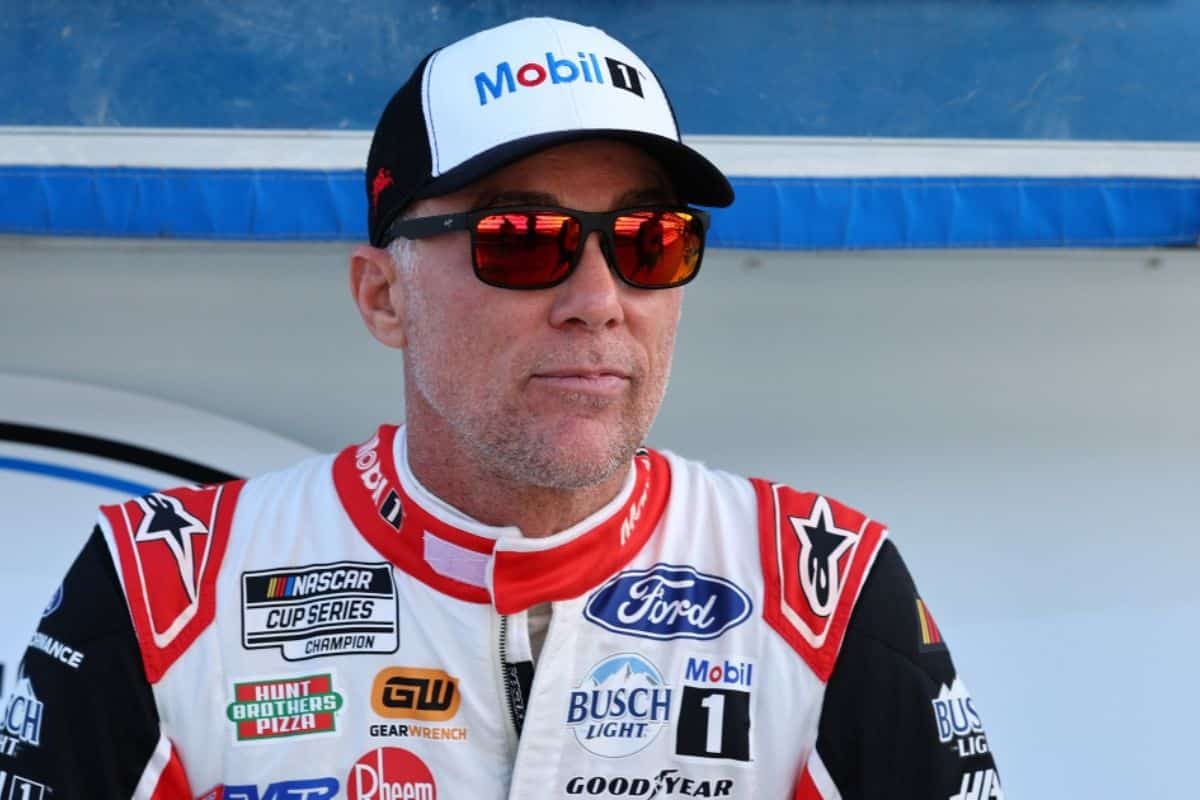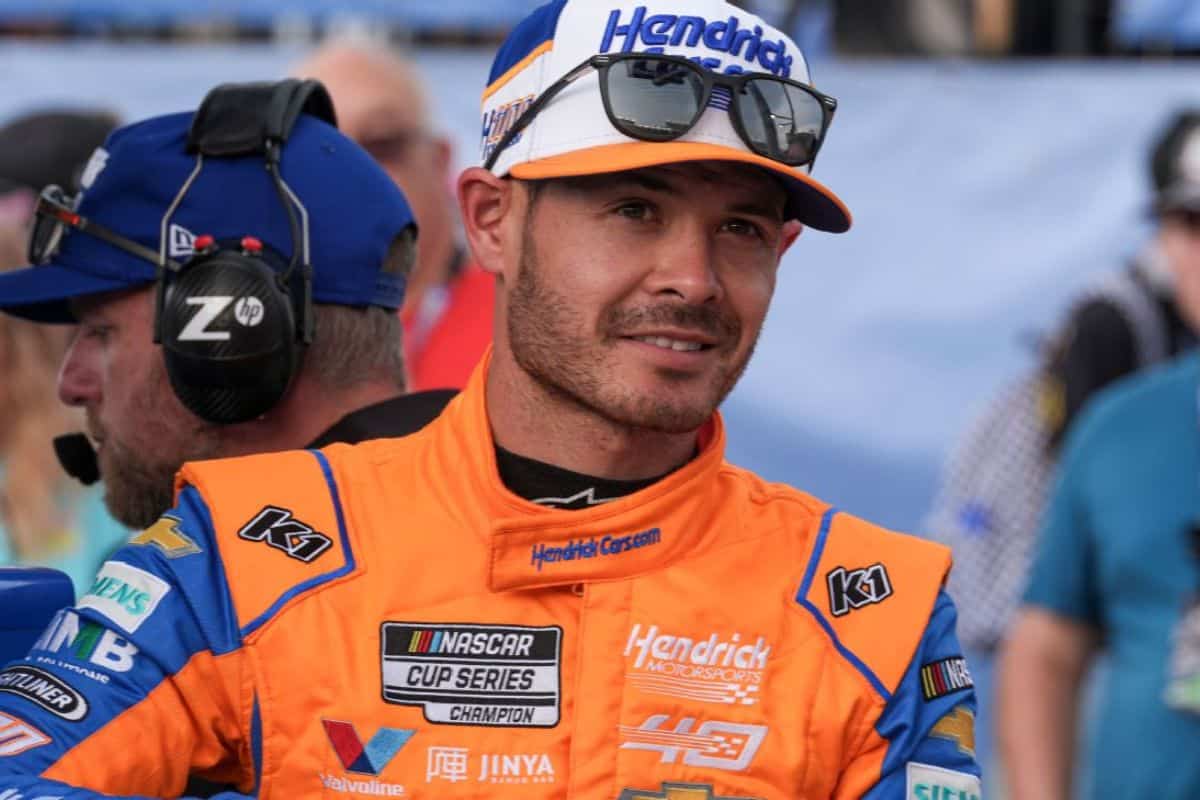Kevin Harvick Calls Out Kyle Larson: In professional racing, Kevin Harvick’s critique of Kyle Larson’s controversial move in Nashville has sparked a detailed debate about the ethics and strategies that define the sport. Harvick’s pointed remarks, particularly regarding Larson’s aggressive overtake on Denny Hamlin, emphasize a broader discussion on the delicate balance between competitive passion and tactical acumen. As Harvick advocates for a shift towards disciplined racing, the community is left contemplating the consequences of such high-risk actions.
Key Highlights
- Kevin Harvick criticized Kyle Larson’s aggressive pass on Denny Hamlin during the Nashville race.
- Harvick emphasized the need for patience and strategic decision-making in racing.
- Larson’s forceful action led to a chain reaction impacting race dynamics.
- Harvick advocates for balancing aggression with tactical execution for victory.
- The incident sparked discussions on the balance between aggression and sportsmanship in racing.
Incident Overview and Reactions
The recent clash between Kyle Larson and Denny Hamlin reached a boiling point in Nashville, sparking a wave of reactions from the racing community, including pointed criticism from Kevin Harvick. The rivalry, which has been simmering through several races, was further inflamed when Larson wrecked his car while aggressively challenging Hamlin. This incident has drawn significant attention, as it not only highlights the intense competitive spirit but also raises questions about the strategic decision-making in high-stakes racing scenarios.
The altercation between Larson and Hamlin can be traced back to previous races, where tensions had begun to surface. A particularly notable moment was the heated exchange between Larson and his spotter, reflecting the growing frustration within Larson’s camp. In Nashville, Larson’s bold attempt to overtake Hamlin culminated in a dramatic crash, emphasizing the fine line between aggressive racing and reckless driving.
Reactions from the racing community have been polarized. Some applaud Larson’s tenacity and willingness to take risks, viewing it as a hallmark of a true competitor. Others, however, express concern about the potential safety implications and the impact such incidents have on the integrity of the sport. The wreck has ignited debates over the balance between competitive edge and strategic prudence, with many stakeholders weighing in on the broader implications for NASCAR.
Kevin Harvick’s Critique
Kevin Harvick did not mince words when he criticized Kyle Larson’s tactics in Nashville, particularly highlighting the ill-advised timing and questionable method of his attempted pass on Denny Hamlin. Harvick’s critique zeroed in on the critical moments of the race where Larson’s aggression seemed to overshadow strategic prudence, a decision that ultimately compromised not just his race but also the integrity of competitive racing.
Harvick’s seasoned perspective brings a detailed understanding to the complexities of NASCAR racing. He emphasized that Larson’s move appeared to lack the calculated patience required for a successful pass, especially against a seasoned driver like Hamlin. Harvick argued that such impulsiveness can lead to unnecessary risks, which not only hampers individual standings but also disrupt the race dynamics for other competitors. He highlighted that while aggression is an inherent aspect of racing, it must be balanced with strategic foresight to ensure it serves the ultimate goal: winning the race.
“I don’t even think that was the right place to wreck him.”
“You can’t be bumper to bumper like that, pushing him into the corner. You’re not just going to push those tanks out of the way.”
“I had this conversation with some of our younger drivers a couple of weeks ago. I said, ‘Look, when you’re in a position to win the race, that’s not when you settle the score.” – Harvick
Moreover, Harvick highlighted the importance of prioritizing race wins over settling personal scores on the track. He pointed out that Larson’s action seemed more like a spur-of-the-moment decision rather than a well-thought-out strategy aimed at securing a victory. This differentiation, Harvick suggested, is what separates champions from the rest; the ability to balance aggression with tactical execution.
“You try to win the race first and settle the score later because I still believe that Kyle Larson could have won that race if he had raced like Kyle Larson.” – Harvick
In his critique, Harvick essentially called for a return to a more disciplined approach to racing, where the focus is on the larger objective of winning rather than momentary displays of bravado. His insights serve as a valuable reminder of the intricate balance required to excel in NASCAR, a sport where split-second decisions can make or break careers.
Incident Details
Harvick’s critique gains further context when examining the specifics of the incident during the overtime restart, where Larson’s forceful action resulted in contact with Denny Hamlin, leading to a chain reaction that ultimately changed the race dynamics. This crucial moment in the race unfolded with intense pressure and precision, capturing the attention of both fans and analysts equally.
- Initial Contact: As the field bunched up for the overtime restart, Kyle Larson made a bold move on the inside, attempting to gain position. This move resulted in Larson’s car making contact with Denny Hamlin’s vehicle. The impact caused Hamlin to lose control momentarily and veer up the track.
- Chain Reaction: Hamlin’s loss of control led to an unintentional sideswipe of Ross Chastain, who was running a strong race up until that point. Chastain’s car was subsequently pushed into the outer wall, effectively ending his chances for a top finish and eliminating him from the running.
- Widespread Chaos: The incident between Hamlin and Chastain triggered a chain reaction, causing multiple cars to scatter and several drivers to take evasive actions. This resulted in a chaotic scene on the track, with numerous vehicles being involved in subsequent collisions. The race dynamics were altered significantly, with the field reshuffled and several contenders falling behind.
This critical analysis of the incident emphasizes the high-pressure situation and razor-thin margins in professional racing. While Larson’s assertive tactics demonstrate his competitive spirit, they also highlight the inherent risks involved.
Larson’s Response and Reflection
How did Kyle Larson respond to the wave of criticism that followed the incident, and what insights did he offer regarding his approach and mindset during the race?
In the aftermath of the Nashville controversy, Kyle Larson addressed the criticisms with a calm and calculated response. He acknowledged the competitive nature of the sport and the intense moments that can arise on the track, while firmly maintaining that there is no ongoing rivalry with Denny Hamlin. Larson emphasized that their encounters, although occasionally contentious, do not constitute a personal feud but are rather part and parcel of racing.
“Just a lot of craziness there at the end There were a lot of cars short on fuel and we were one of them.”
“I wouldn’t agree or disagree [about having an ongoing rivalry]. It comes and goes. I feel like we race well together at times, and there’s are times when I feel like he races me, not the fairest. I’m sure he feels the same way. So, yeah. It’s not an ongoing rivalry.” – Larson
Larson’s reflection on the incident revealed a detailed understanding of the dynamics at play. He highlighted the importance of strategic decision-making in the heat of the moment, suggesting that his tactics were driven by a desire to optimize performance under stress. Larson articulated that the line between aggressive and fair racing can often blur, especially when every moment counts and the competition is fierce.
Moreover, Larson’s response highlighted his respect for his fellow drivers, including Hamlin, even amidst the disagreements. He noted that while they may have differing views on what constitutes fair racing, these differences do not translate into animosity. Instead, Larson portrayed their interactions as reflective of the spirited and passionate environment that defines NASCAR.
Future Prospects
As the racing season progresses, the intriguing question of whether Kyle Larson and Denny Hamlin’s competitive spirit will continue to fuel intense on-track battles looms large over the NASCAR landscape. This dynamic rivalry has not only captivated fans but also raised important discussions within the racing community about the ethics and strategies that define the sport. With each race, the stakes grow higher, and the potential for dramatic confrontations becomes ever more apparent.
- Performance Consistency: Both Larson and Hamlin are known for their exceptional driving skills. Consistency in their performance will be pivotal. Should either driver face a decline or surge in form, it could greatly alter the balance of power between them.
- Team Strategies: Behind every successful driver is a competent team. The strategic decisions made by their respective teams, from pit stops to tire choices, will play an important role. Effective teamwork and tactical expertise will be necessary in gaining an edge over the competition.
- Mental Resilience: The psychological aspect of racing cannot be underestimated. Larson and Hamlin’s ability to maintain focus and manage the psychological challenges of their rivalry will be crucial. Mental fortitude will determine how they react under stress and in high-stakes situations.
News in Brief: Kevin Calls Out Kyle Larson
Kevin Harvick’s critique of Kyle Larson’s aggressive tactics at Nashville serves as a crucial reminder of the fundamental balance between bold strategies and strategic restraint in racing.
By emphasizing the implications of Larson’s actions, Harvick highlights the need for a disciplined approach that prioritizes race wins over personal disagreements.
This incident has sparked significant discussion on racing ethics and strategy, emphasizing the complexities inherent in achieving consistent success on the track.
ALSO READ: Chase Elliott Praises Kevin Harvick’s Career With a Clever Nod



